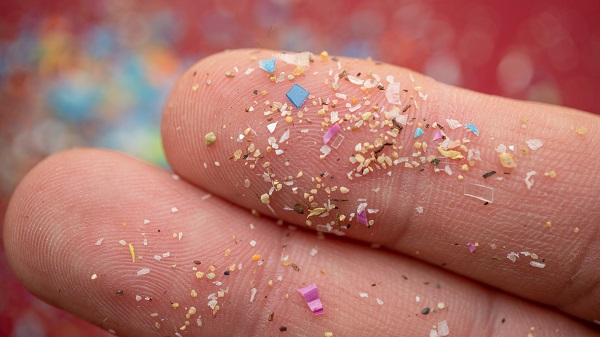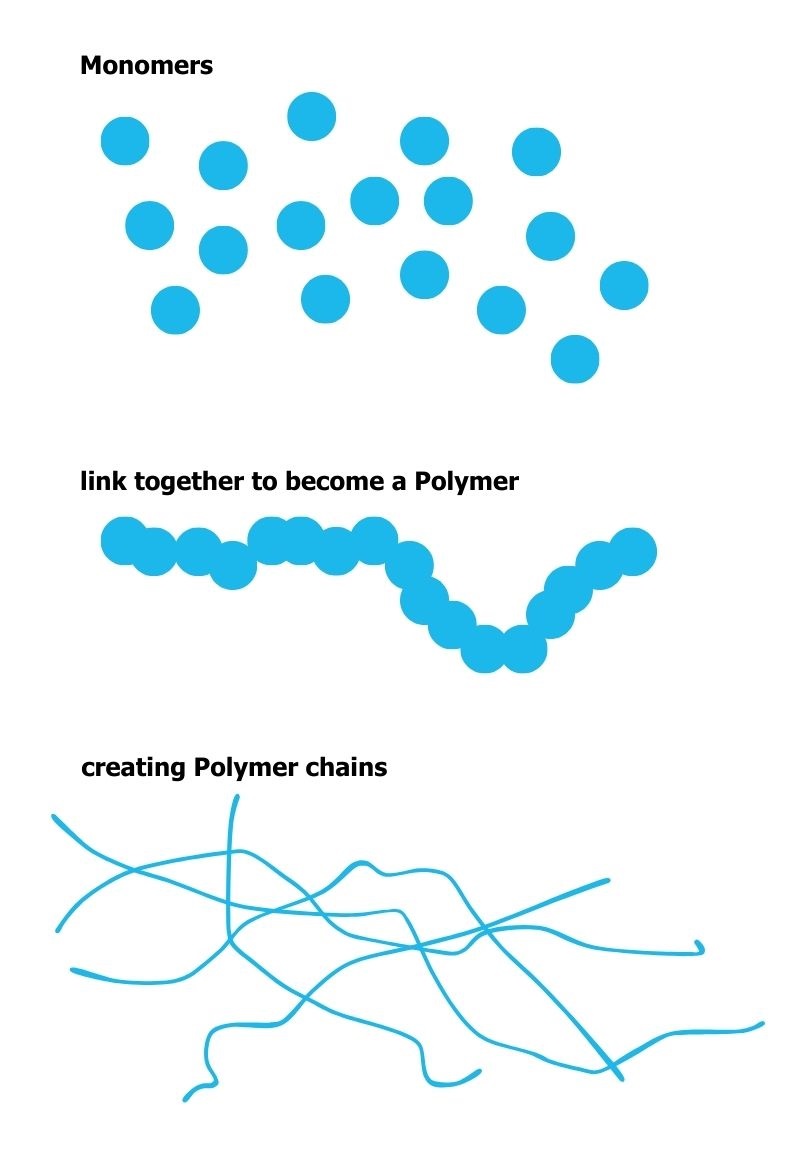Posted: Tuesday, 22 August 2023
It is down to us to make lasting positive change happen and the public’s views on worldwide issues such as water quality, are continuing to evolve as we become more and more aware of the potential damage that our lifestyles and demands are causing.
We have previously
looked at PFAS (known as forever chemicals, these are incredibly durable and do
not break down over time) and how new ideas and techniques including using ultraviolet
light may be a way of removing these from the water supply. You can read more
on this in our PFAS blog here.
This blog
is taking a look at another growing issue that is occurring in both our oceans
and drinking water supply, that of plastic contamination.
Plastics
and Microplastics – what do we mean and are they a problem?
Much has
been talked about the amount of plastic pieces and microplastic particles now
in the world's oceans, and the damage it is doing to the marine ecosystems, but
plastic in fresh and wastewater supplies is a growing concern. These accumulate
in much the same way and arguably can cause a more immediate impact on human
life in the short term.

Microplastics
are tiny particles of plastic – typically smaller than 5mm’s in size. Our
increased use of plastic goods has directly contributed to the microplastic
problem as we typically only recycle (burn) around 9% of the plastic produced
each year. The rest, once used, ends up in landfill, our oceans and ecosystems.
Microplastics come not only from larger items breaking down but also are produced
for use in microform in many cosmetics, shower products and toothpastes. These
are added to our water systems directly from homes and end up in rivers, oceans,
soil and recycled water supplies.
The impact
on marine life has been studied and it is known that microplastics can cause
direct damage to fish (i.e. their mouths) as well as accumulating in their
stomachs which obstructs their ability to feed.
Humans consume microplastics
through the food chain, fresh water, bottled supplies and consumer products. At
this moment in time, research into the effects of microplastics on the human
body is in its early stages but there is a growing concern as evidenced by this
report of microplastics now appearing in human hearts and blood.
Whilst there is no current proof that these cause lasting harm it has to be
remembered that all research is recent and that there are no long-term studies
available to reference.
The
challenge in having plastic pieces and microplastics in our water is that
plastic is very, very hard to break down. Plastic is not a natural product and
so cannot be easily dealt with via natural ecosystems. A piece of plastic is
likely to exist in water for an estimated 450 to 600 years* and with our
never-ending and continuing increase in demand for plastic goods, the amount we
will have to deal with, and the potential for more harmful effects is likely to
continue to grow.
Is the
water treatment industry the good or the bad guys?
Of course,
water treatment companies are aware of the plastic problem and engage in the
removal of large pieces of plastic as part of their water treatment process.
But, right now, water treatment plants that release biosolids (waste sludge) are
a main source of microplastics being added to environmental waters.
Also, with
plastics being very hard to break down and the microplastic pollution problem
being relatively new, national and international regulatory demands are still
developing to catch up. This means water treatment systems are not necessarily
currently configured to remove them in any adequate way.
So, what
more can be done?
Plastic can
undergo changes in its structural composition and ‘age’ in an open environment
(albeit very slowly). This ageing process happens due to several factors that
include breakage, heat or light degradation and biodegradation. As part of these
processes, the microplastics can start to release chemical contaminants which
come from additives such as stabilisers, plasticisers, fillers and antioxidants.
It is known
that ultraviolet light plays a critical part in the light (or photo)
degradation process of polymers, including ones in plastic. So, with our
ability to utilise UV light to speed up processes such as curing and bonding, perhaps
now is the time to invest in more research on how ultraviolet light can help
bring the microplastic problem under control?
How can UV affect plastic composition?

Plastic
composition is made up of polymer strands. Polymers are essentially large
macromolecules that have many repeating subunits within them. They are usually structured
as interconnected strands. When plastic polymers are exposed to UV light, they
absorb it which creates free radicals. (Free radicals are molecules that are
unpaired and so are capable of independent existence). These free radicals interact with oxygen to create more free radicals which in
effect accelerates the ‘ageing’ process and eventually leads to a collapse of
the polymer chains.
Research
carried out (Combined Effects of UV Exposure Duration and Mechanical Abrasionon Microplastic Fragmentation by Polymer Type, Song et al. 2017) on the effects of plastics exposed
to UV light at 254nm over a 2 to 6 month time period proved the increased break
up of plastic particles, some to the degree of undetectable sub-micron
particles. However, it also noted that the increased salinity of seawater
inhibited the absorption of UV, slowing down the degradation process. The
research proved that natural UV light is part of the reason for an increase in
microplastics in the marine ecosystem, but also points to a possible solution
to tackling the problem in the future.
For further
information on how polymers interact with UV light during the curing, bonding
or coating process please take a look at our ‘How Does UV work’ series of
blogs on our sister site Alpha-Cure.
What other
research is out there?
There has
been some research already undertaken to look at UV light and its effect on degrading
microplastic composition in water treatment systems.
In 2020
research was published under the title ‘Ultraviolet-C and vacuum ultraviolet inducing surface degradation of microplastics’.
This piece of work first looked at what effect a standard dose of UV light in a
typical water treatment process had on microplastics. The result is very little
to no effect. But the research also tested when the UV dose was increased to
twenty times the normal amount. This resulted in ‘significant alterations on
surface morphology, chemical features and hydrophobicity of the plastic’ –
essentially a high dose of UV created cracks as it weakened the way the plastic’s
chemicals bonded together. It is thought that this could result in a potential
reduction in trace organic contaminants (TrOCs).
Another
piece of research titled ‘UV Light Causes Structural Changes in Microplastics Exposed in Biosolids’ was published in 2022. This looked at how UV-A and UV-C
light may accelerate microplastic degradation, on three types of plastic when
treated at 70°C.
It found that ultraviolet light did have an effect on
microplastic composition. It worked better when the plastic was in a biosolid
suspension (perhaps aided by the presence of other organic matter and water).
It also noted that UV-A light appeared more effective than UV-C. The
conclusion was that UV light, when used with raised temperatures can aid in
accelerated plastic polymer degradation.
A third
piece of research published again in 2022 (Investigation of the effect of microplastics on the UV inactivation of antibiotic-resistant bacteria in water) looked at the effect microplastics
had on the effectiveness of UV treatment of water. It found that plastics can help
‘block or protect’ bacteria from UV disinfection. A conclusion to be drawn from
this research would be that as the microplastic content of water continues on its
upward trajectory then users of UV treatment systems will need to continue to monitor
and recalculate their UV treatment times to take microplastics into account.
Conclusions
Whilst
research into how UV light can help deal with the growing problem of plastics
and microplastics is at an early stage, the good news is that it is beginning
to happen. The research done so far clearly shows there is scope for ultraviolet
light to help in breaking down microplastics, but it will require more
investment and new, more powerful UV treatment systems.
This means
it is still some way off being an effective solution to the microplastic
problem but should be considered as a credible option to be explored. To make
it happen we need funding to be made available to continue research and develop
activities in this field.
Alpha-Purify
is a world leader in the production of high-quality ultraviolet light lamps used
in disinfection, germicidal and purification systems around the world.
If you'd like information on our products...
Contact Us
*source: US’
National Oceanic and Atmospheric Administration (NOAA) and Woods Hole Sea Grant